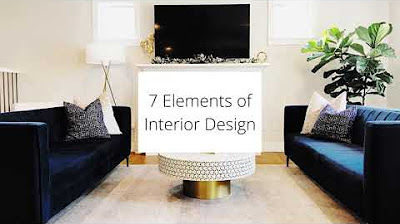How to use Paint to Make Your Space look Larger with Sharon Grech - Cityline | Benjamin Moore
Summary
TLDRThe video discusses how to use color strategically to change the perception of a room's shape without any construction. By using light colors, rooms can feel more open and spacious, while darker colors on accent walls or ceilings can create a cozier, intimate vibe. Painting techniques, such as highlighting opposing walls or painting ceilings, can alter the visual height and depth of a room. The discussion emphasizes how these methods can make spaces appear taller, wider, or more enclosed depending on where and how color is applied.
Takeaways
- 🎨 Color can create the illusion of height, width, or depth in a room without changing its physical dimensions.
- 🏠 Painting a room one light color makes it feel more spacious by reflecting natural and artificial light.
- 🎯 An accent wall, especially in dark colors, draws attention and makes a space feel more intimate and cozy.
- 🏞 Dark colors can also camouflage features like TVs or doors, helping them blend into the room.
- 📏 Painting opposing sidewalls in a room can elongate the space and add visual height, which is ideal for rooms with low ceilings.
- 🛋 Painting the ceiling a dark color lowers the perceived height, creating a cozier, more intimate feel in the space.
- 🌈 Using lighter shades on the ceiling still brings it down slightly, but keeps the space feeling open and airy.
- 📐 Horizontal lines or painting the lower third of a wall can make a room appear wider while drawing attention to the living space.
- 🖼 Strategic placement of color can emphasize architectural features and shift focus within the room, such as highlighting interesting angles.
- 🔄 Different paint techniques can completely transform the feel of the same room, making it feel larger, smaller, or more inviting.
Q & A
How can you make a room feel taller without construction?
-Using color strategically can create the perception of height in a room. Painting opposing walls or the ceiling with specific shades can draw the eye upward, making the space feel taller.
What effect does painting a room all one color have?
-Painting a room all one color, especially in lighter shades, can make the space feel more open. The lack of contrast means you don’t notice the boundaries, which helps create a sense of spaciousness.
Why is painting a single accent wall a popular choice?
-Painting a single accent wall draws the eye directly to it, adding focus to that part of the room. Darker accent walls can make a space feel cozier and can visually shorten the depth of the room.
What happens when both sidewalls are painted in a contrasting color?
-Painting both sidewalls creates a narrowing effect while also drawing the eye upward, which can give a sense of added height in rooms with lower ceilings, making them feel taller.
How can a dark ceiling impact a room’s atmosphere?
-A dark ceiling can make a space feel more intimate by visually bringing the ceiling down. It’s often used in large rooms or spaces where a cozier, more enclosed feel is desired.
What is the benefit of painting the lower third of a room in a contrasting color?
-Painting the lower third of a room can bring the focus down, creating a more grounded feeling in the space. It can also make the room appear wider due to the horizontal line it creates.
How does sunlight interact with lighter colors in a room?
-Lighter colors reflect sunlight, making a room feel brighter and more spacious. This reflection enhances the perception of openness, especially if the space receives a lot of natural light.
Why might someone choose to camouflage elements like a TV or door using paint?
-Using dark colors or similar shades to the surroundings can camouflage items like a TV or a door, allowing them to blend into the space and maintain a seamless, less cluttered appearance.
How does the choice of accent wall affect an open-concept space?
-In an open-concept space, a dark or uniquely colored accent wall can emphasize architectural features and create a visual separation between different functional areas, making the space feel more defined.
What is meant by the term 'fifth wall' in interior design?
-The 'fifth wall' refers to the ceiling in a room. Adding color or contrast to the ceiling can be a design strategy to change the perception of the room's height or to introduce a unique visual element.
Outlines

This section is available to paid users only. Please upgrade to access this part.
Upgrade NowMindmap

This section is available to paid users only. Please upgrade to access this part.
Upgrade NowKeywords

This section is available to paid users only. Please upgrade to access this part.
Upgrade NowHighlights

This section is available to paid users only. Please upgrade to access this part.
Upgrade NowTranscripts

This section is available to paid users only. Please upgrade to access this part.
Upgrade NowBrowse More Related Video
5.0 / 5 (0 votes)





